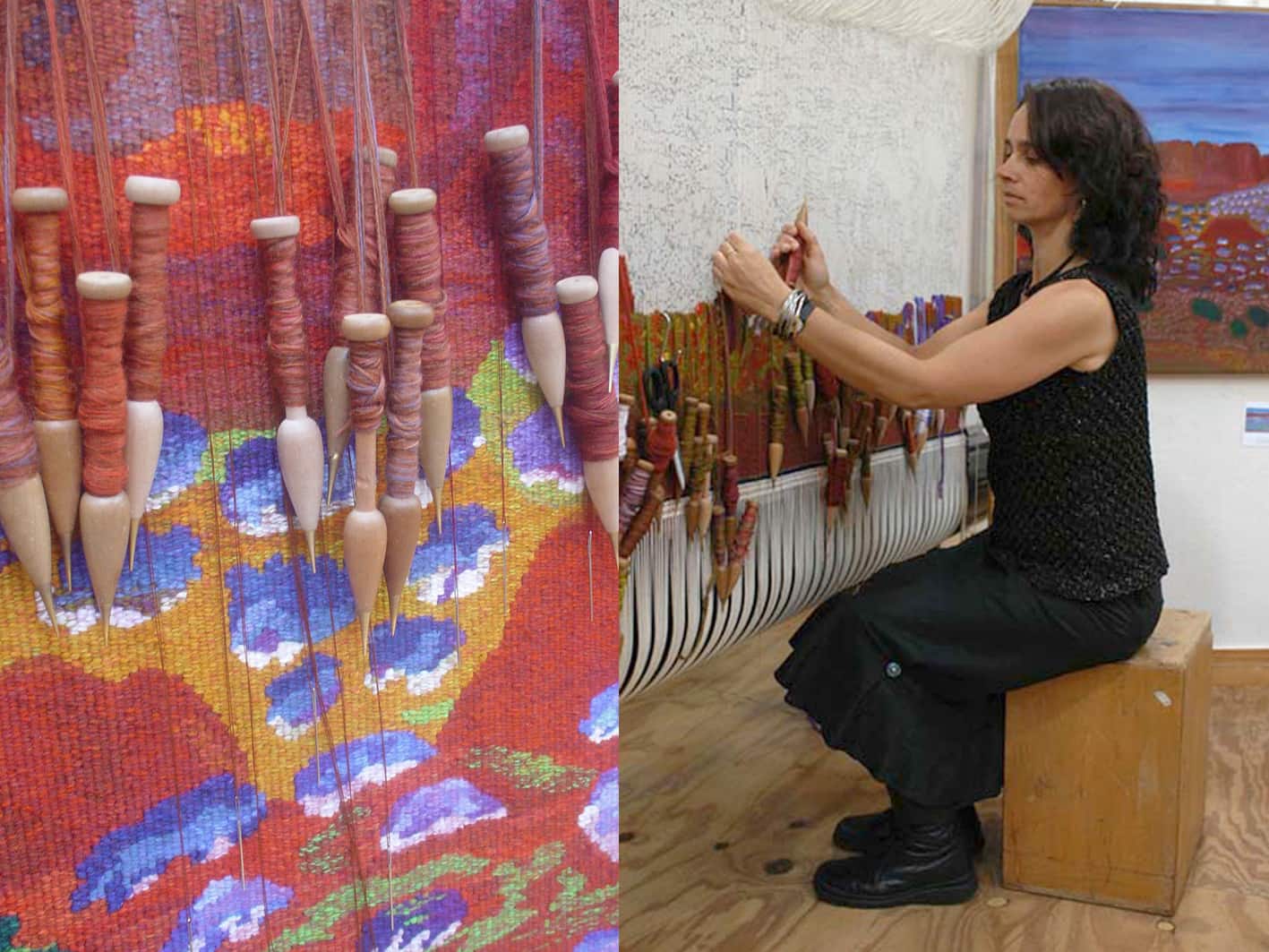

Daisy Andrews comes from the remote Aboriginal community at Fitzroy Crossing in the Kimberley region of Western Australia. She was born at Cherrabun Station and belongs to the Walmajarri people. In 2004 the ATW translated her painting, Lumpu Lumpu country, into a tapestry.
The country of Lumpu Lumpu is Andrew’s ancestral terrain, but her family were already displaced when she was born. Stories about the land were narrated to Andrews by her parents and grandparents, but she only visited the area later in life. Her family, driven out by dispossession, were too traumatised to return. Andrew's paintings, drawings and prints of Lumpu Lumpu are made as memorials to her homeland.
The tapestry Lumpu Lumpu country captures the drama of the landscape with its cliffs and valleys, wildflowers and blazing red earth. The carpet of purple flowers finds a visual echo in the lavender coloured sky, and the whole image is suffused with sentiment. Andrew states “when I draw my picture I am seeing that good country in my head, looking at those sandhills, flowers, everything was very good. I think hard when I look at my country. I think how I have to paint it. I look hard, it makes me sad too, it is beautiful, good country, but it makes me sad to think about all of the old people who were living there.” [1]
This tapestry was the first tapestry produced for the Embassy Tapestry Collection and is currently on loan to The Australian Embassy in Tokyo. Lumpu Lumpu country, was commissioned by the Tapestry Foundation through the support of a number of private donors.
Since 1991 Andrews was an active member of the Mangkaja Arts Centre. Andrew’s work has been exhibited and housed widely in national and international collections.
The ATW was saddened to hear of Daisy’s passing in 2015 and hopes that her tapestry can exist as a legacy to her life story.
[1] Daisy Andrews, quoted in the Victorian Tapestry Workshop Newsletter, Vol 1, Issue 16, October 2004.